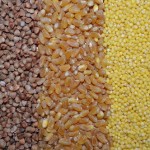EATING GUIDELINES FOR RECOVERY FROM INJURY
By JAMES STARING, FIT TO LAST
We’re taught to feed a cold and starve a fever, but what do we do when we suffer an injury?
Here are a few eating guidelines to help you heal faster after an injury (i.e. muscle strain, twisted ankle)…

1. Determine your requirements
Before deciding what to eat, you need to consider your recent level of activity leading up to the injury. Were you training hard and getting ready for an event? Do you train infrequently and as such aren’t very active?
Thinking about this is important because you must feed yourself with your current metabolism in mind, while also recognising that your calorie intake must increase due to the extra energy your body needs to repair itself.
The important point here is not to decide to eat simply because you are hungry, but to consciously take stock of the diet you had before the injury and then account for the additional energy your body needs to repair/recover
2. Focus on the quantities of macronutrients (protein, fat and carbohydrate) that will help the most, and plan

Protein: during training, protein is an important part of the recovery process post-training. When you are injured, it becomes even more important for repair. According to Dr. John Berardi at Precision Nutrition, protein intake is essential to ensure rapid recovery, and an injured individual should aim for at least 1g of protein per pound of bodyweight per day[i]. Protein needs to be ingested post-workout to help rebuild tissue that has been damaged during the training process. When you get injured, protein becomes even more important to accelerate the repair process.
Takeaway: at least 1g of protein per pound of bodyweight daily during recovery.
Fats: Dr. Berardi also suggests increasing omega 3 during the healing process. The key during the acute phase of an injury (an injury that has occurred for the first time, not an injury that has been repeated and is therefore chronic) is to control the inflammation. By elevating the omega-3 content of your diet you are increasing your body’s ability to control inflammation.

Takeaway: Daily algae supplements and three portions of cauliflower per week
In the interests of spoiling yourself whilst in recovery, click here for a video recipe for chocolate cherry bites. In addition to containing dark chocolate (which is very heart healthy), cherries are an excellent anti-inflammatory. The recipe is easy to make as you will see, and besides being great to control inflammation, it also tastes really good!

Carbohydrates: while there is no evidence or recommendation for the quantity of carbohydrates to consume for recovery, by controlling blood sugar levels through non-processed carbohydrates (i.e. whole grains) you will minimise the risk of additional inflammation occurring as you recover from injury.
Takeaway: keep the carbohydrates unprocessed to stabilise blood sugar and prevent further inflammation.
Summary
When you get injured (and it will happen at some point), make sure that you consciously think about your eating strategy to aid your recovery. Just because you are recovering, it doesn’t mean your body has stopped working; so don’t rely on a decreased appetite due to decreased activity as the gauge for what to consume.

ABOUT THE AUTHOR
James Staring is a certified fitness professional with experience training endurance runners, triathletes, low back pain sufferers, and weekend warriors of all ability levels.
James focuses on building the best version of you and inspiring you to new levels of fitness – regardless of your current ability or age. In particular James specialises in exercise after injury and helping those who are, perhaps, feeling a little less mobile than they used to.
Web: www.fittolast.co.uk
Twitter: @fittolast
Facebook: www.facebook.com/fittolast
Linkedin (James Staring): uk.linkedin.com/in/fittolast
